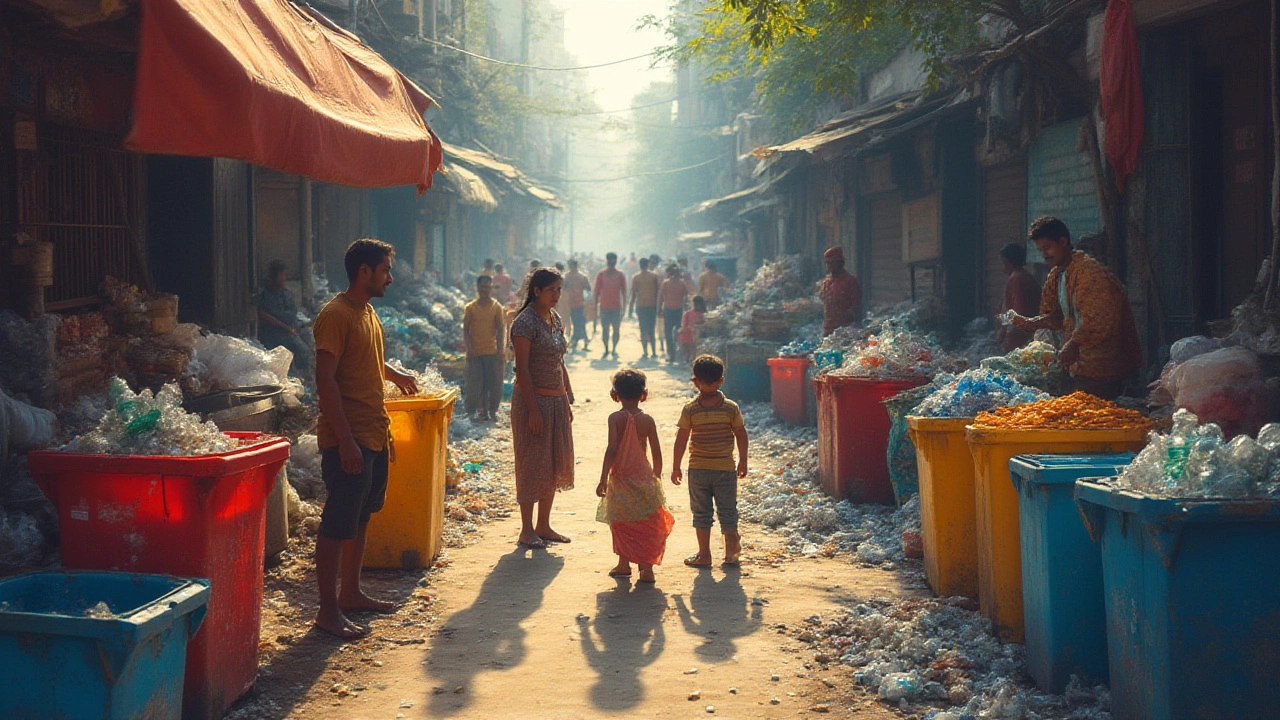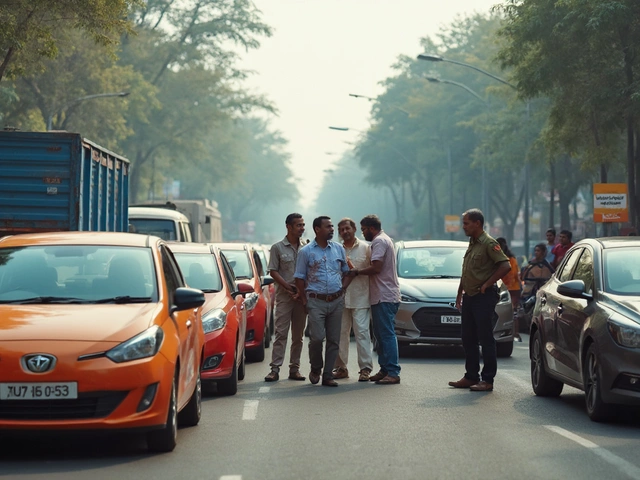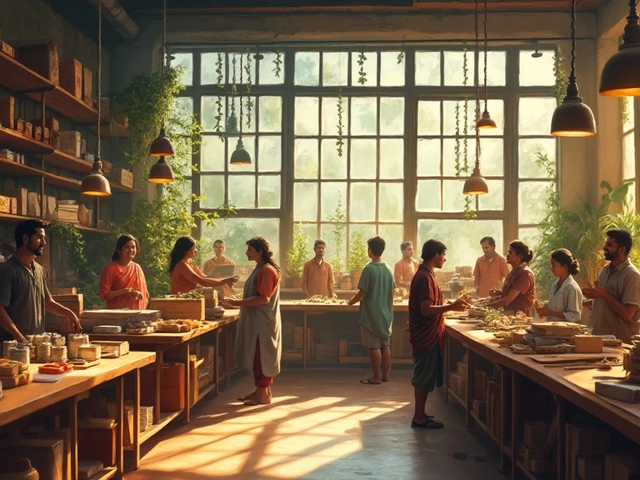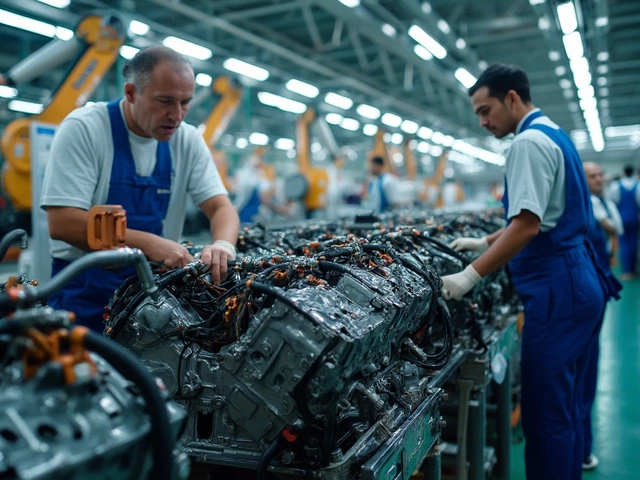Imagine you’re sipping your favourite cold drink from a plastic cup at the park. The breeze is cool, Max, my floppy-eared rescue, is rolling on the grass, and for just a second, you forget about the cup in your hand. Until you toss it in the nearest bin—poof, gone from your life. But that’s where the story starts. Your cup, plus millions just like it used today in Britain alone, now begins a long, complicated journey. So, where does this plastic actually go after you use it?
The Hidden Paths of Plastic Waste
Right after you bin that plastic cup, it enters a massive and messy global network. Here’s where choices split: recycling bin, regular rubbish bin, maybe litter on the street—each sets plastic on a different road. In Birmingham, about half our household waste makes it to recycling bins. But here’s the kicker: not every bit of plastic actually gets recycled, no matter what bin you choose. Some plastics, like those transparent PET bottles, are more likely to get a second life, while mixed plastics, food-covered film, and black trays almost always end up somewhere worse.
Let’s map out the key destinations:
- Recycling Centers: About 44% of UK plastic packaging was collected for recycling in 2023. But only a portion of that was recycled domestically. Most recycling plants want clean and sorted plastics. Dirty, mixed, or the wrong types? Often rejected.
- Landfills: Landfill remains the final stop for a significant chunk, with the UK sending around 23% of collected plastic packaging to landfill last year. Some of it stays buried for centuries.
- Incinerators: Roughly 33% of plastic waste heads to energy-from-waste incinerators, where it’s burned for energy, creating carbon emissions and toxic ash.
- Export: Here’s one people forget—Britain exports hundreds of thousands of tonnes of plastic waste every year to countries like Turkey and Malaysia. But what happens to exported plastic is often a mystery, with news outlets revealing that some ends up in open dumps or rivers overseas.
- Litter and Pollution: The plastic that never makes it into a bin at all? A 2024 charity survey says 72,000 tonnes of plastic litter is dropped yearly in the UK, clogging rivers, streets, even infiltrating the food chain.
Check out how UK plastic waste was treated in 2023:
| Destination | Percentage | What Happens? |
|---|---|---|
| Recycled (domestic and abroad) | 44% | Turned into new packaging, fibres, or products |
| Landfilled | 23% | Buried for decades or longer, contributing to soil/water pollution |
| Incinerated | 33% | Burned for energy, releases emissions |
So, that plastic cup? Odds are stacked that it won’t return as something useful. Many plastics weren’t even designed with recycling in mind. No wonder the UK ranks in the top five per-capita plastic waste producers in Europe, according to a 2024 Statista report.
Can All Plastic Actually Be Recycled?
Wouldn’t it be brilliant if every single bit of plastic you bin with care just gets endlessly recycled? That’s not how it works. There are many types of plastic, and recycling facilities only accept specific ones. Britain uses those resin ID codes (numbers 1-7 in triangles), but hardly anyone knows them by heart. Typically, recycling targets:
- PET (1): Drink bottles, some trays—easy to recycle, high demand.
- HDPE (2): Milk bottles, cleaning product containers—also recycled often.
But the tough stuff comes from low-value, mixed, or flexible plastics:
- LDPE film (4): Bread bags, wrappers—almost never accepted by curbside.
- Polystyrene (6): Cheap takeout boxes, foam—very hard to recycle locally.
- Plastic number 7 (Other): Unknown blends—a weird grab bag of plastics, nearly always binned.
Why do so many plastics fail to make the cut? The answer’s simple: sorting is complex, and reprocessing only works if plastics are really clean and uniform. Tossing a greasy pizza box or a yoghurt pot half-full of leftover fruit into recycling means it’ll probably get rejected. And even the plastics that do make it? They can often only be recycled once or twice before the chemistry breaks down.
Here’s a weird fact: in 2022, only about 9% of all plastic ever produced worldwide had been recycled—most is still out there as landfill or pollution, according to the UN. The rest of it? Still out there, sometimes right under Max’s muddy paws when we walk along the River Rea.

The Life of Plastic after Recycling
Let’s follow the lucky bits of plastic that do get recycled, just to see what new life looks like. First, plastics get sorted—sometimes by hand, other times using whirring machines, lasers, even little puffs of air to blow plastics into the right pile. Next comes cleaning—massive tanks and spinning brushes scrub off old food and grime. After that, it all melts down to pellets or flakes, and these bits are turned into new products.
But recycled plastic isn’t as glamorous as you might think. Plastic loses strength and purity after each recycling round, called ‘downcycling.’ That water bottle you tossed last week? It might become part of a park bench, clothes, or piping—not another bottle. PET, marked with a ‘1,’ is the only one that occasionally enjoys closed-loop recycling among plastics. The rest downgrades quickly.
And the system isn’t foolproof. A 2023 report from the UK’s Environment Agency found that as much as 15% of binned ‘recyclable’ plastic is actually incinerated or landfilled after sorting. Contamination from food, bits of non-plastic, and wrong sorting mean recycling rates stall. That innocent mistake when you bin that greasy takeaway tray? It can ruin an entire haul and send stuff right to landfill.
There’s something else—recycling itself can have a pretty hefty carbon footprint, especially when waste is shipped halfway across the world before it's reprocessed. That’s a reason major UK supermarkets started offering soft plastic recycling return points in 2023, aiming to keep more plastic local. Progress, but we’re nowhere near closing the loop.
The Environmental Impact of Plastic Waste
The real headache starts when plastic escapes the waste system entirely. In Britain, plastic litter clogs canals, blows across rail tracks, and—if it hits rivers—can make it straight to the sea. Scientists have found tiny pieces of plastic (microplastics) in air, water, and even inside your steak. The latest UCL research from December 2024 found that every Brit likely inhales up to a credit card’s worth of microplastics each week.
When plastic lingers in landfills, it doesn’t just sit pretty. It breaks down into smaller bits, releasing chemicals like BPA and phthalates. These end up in soil and groundwater. It’s not a small problem. The World Wildlife Fund estimated British rivers alone carried enough microplastic each year to circle the planet twice.
Animals are hit hardest. Urban foxes chewing on supermarket bags, swans untangling themselves from plastic rings, Max rolling in piles of discarded snack wrappers—he does this more than I’d ever admit. Turtles swallow bags, mistaking them for jellyfish; seabirds feed bottle tops to chicks. According to the Marine Conservation Society’s latest Beachwatch report, 70% of UK beach litter in 2024 was plastic based.
Then there’s the climate toll. Every tonne of plastic burned (even in high-tech UK incinerators) pumps out hundreds of kilos of CO2 and other greenhouse gases, not to mention toxin-laced ash for disposal. Burning or burying it doesn’t really solve anything—it just moves the problem.
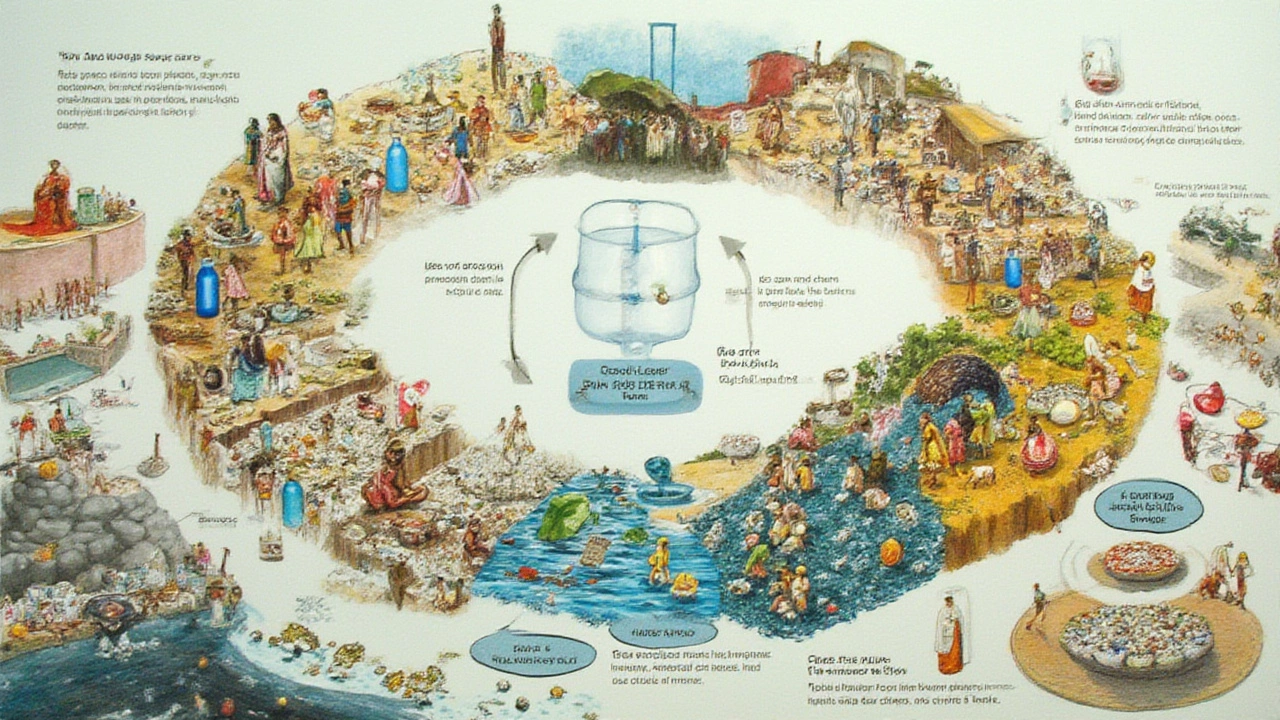
Practical Tips to Cut Down on Plastic Waste
Reading this, it’s easy to get a bit grim. But there is stuff you and I can do about our plastic footprint. Here’s what actually moves the needle—they’re practical, doable in Birmingham or wherever you are, and mostly common sense:
- Know Your Codes: Pay attention to recycling codes. In the UK, most councils take clear PET (1) and HDPE (2), but check yours—rules change all the time.
- Clean Before You Bin: If you recycle, rinse food containers. Leftovers ruin entire recycling batches, sending good plastic to landfill.
- Use Less: The old classic—the best waste is what you never make. Buy loose veggies, invest in a refillable water bottle, skip single-use plastic when you can.
- Pick Up Litter: If you’re out with your dog, stow an extra bag and snap up plastic litter as you go—it’s a small but mighty step.
- Support Deposit Schemes: New bottle deposit return schemes are rolling out in the UK from 2025. Returning drink bottles can actually keep plastic in the closed loop and put a few pence back in your pocket.
- Shop Smart: Choose products with minimal or recyclable packaging. Brands are starting to list exactly what packaging is curbside-accepted.
- Return Soft Plastics: Your local supermarket may have a bin for bags and wrappers—use it!
- Vote With Your Wallet: More stores are stocking loose goods and compostables—let’s keep them on the shelves.
- DIY Reuse: Turn yoghurt pots into seed planters, bread bags into dog poop bags—make Max proud.
The story of plastic doesn’t end when you throw it away. Every step—from how you discard that takeaway fork, to which code you check before binning, to how loudly you push for better recycling—plays into where that plastic goes next. And yeah, it’d be great if we didn’t have to worry about this stuff. Until then, it’s on us to keep trying—and keep Max away from that pile of muddy crisp packets by the playground.

